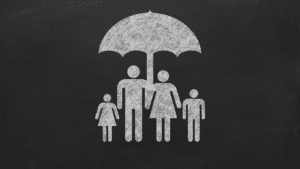
As February rolls in, it brings with it not just the season of love but also an opportunity to focus on another crucial aspect of our lives: our financial well-being. February is recognized as Financial Fitness Month, a time that can be allotted to assessing, improving, and fortifying our financial health. Just as we prioritize our physical fitness, nurturing our financial fitness is equally essential for a secure financial plan. So, let’s dive into how you can leverage this month to enhance your financial household with a comprehensive checklist:
1. Set Clear Financial Goals: Start by defining your short-term and long-term financial goals. Whether it’s saving for a vacation, buying a home, or planning for retirement, having specific, measurable objectives provides direction and motivation for your financial journey.
2. Review Your Budget: Take a close look at your income and expenses. Create or update your budget to ensure that your spending aligns with your financial goals. Identify areas where you can cut back or reallocate funds towards your priorities.
3. Track Your Spending: Monitor your expenses diligently throughout the month. Use apps or spreadsheets to track every purchase and analyze your spending patterns. This awareness will help you identify unnecessary expenses and make informed decisions about where to trim your budget.
4. Assess Your Debt Situation: Evaluate your outstanding debts, including credit cards, loans, and mortgages. Develop a strategy to pay off high-interest debt more aggressively while making timely payments on all accounts. Consider consolidating or refinancing debt to lower interest rates if feasible.
5. Build an Emergency Fund: Aim to set aside funds equivalent of living expenses in an emergency savings account. Having a robust emergency fund provides a financial safety net during unexpected setbacks like job loss, medical emergencies, or car/house repairs.
6. Review Your Insurance Coverage: Assess your insurance policies, including health, life, auto, and home insurance. Ensure that you have adequate coverage to protect yourself and your loved ones from unforeseen events. Compare quotes and consider adjusting your coverage if necessary.
7. Maximize Retirement Contributions: If you have a retirement savings plan, such as a 401(k) or IRA, maximize your contributions to take advantage of employer matches or tax benefits. Review your investment allocations and adjust them based on your risk tolerance and retirement timeline.
8. Invest Wisely: Educate yourself about investment options and strategies that align with your financial goals and risk tolerance. Consider diversifying your portfolio across different asset classes to mitigate risk and maximize returns over the long term.
9. Plan for Major Expenses: Anticipate upcoming major expenses, such as home repairs, education costs, or weddings, and start setting aside funds accordingly. Establish sinking funds or dedicated savings accounts to earmark money for specific purposes.
10. Seek Professional Guidance: If you’re unsure about certain financial matters or need personalized advice, don’t hesitate to consult a financial advisor. A professional can provide guidance tailored to your unique circumstances and help you navigate complex financial decisions.
As you embark on your journey to improve your financial household this February, remember that small, consistent steps can lead to significant progress over time. By following this checklist and prioritizing your financial well-being, you’ll be better equipped to achieve your goals, weather financial storms, and enjoy greater peace of mind. Let us know if you have any questions on accountability this month and how you can improve your personal financial situation. Email info@shermanwealth.com or schedule a complimentary intro call here.



